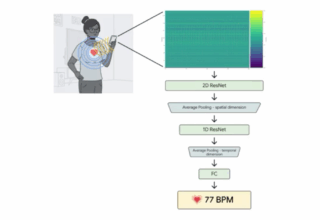Fortunately, everything turned out all right. But sometimes it doesn’t.
More than 100 people drown in rip currents every year in the United States, according to the United States Lifesaving Association, and over 80 percent of the tens of thousands of water rescues on surf beaches each year are due to rip currents. Lifeguards often refer to rip currents as “drowning machines,” according to the National Weather Service.
So here are some things you need to know about rip currents.
What are rip currents?
Rip currents are naturally occurring, relatively narrow, and sometimes strong currents that flow away from the beach, according to the National Weather Service.
Rip currents can form at any beach with breaking waves, weather officials said.
The speed of the outbound currents can exceed 6 miles per hour, which is faster than speeds reached by Olympic swimmers, according to weather officials.
Typically, rip currents are no more than 30 feet in width, but larger ones can form, experts say. Rip currents more than 300 feet wide have been observed.
The currents can extend more than the length of a football field from the shoreline.
What are the signs of a rip current?
Rip currents can be difficult to identify, especially from ground level and especially on days when the surf is extremely rough. Even experienced people can have trouble spotting one, according to the weather service.
What’s more, the worst types of rip currents can occur when weather at the beach is beautiful. Storms brewing far out at sea can cause dangerous rip currents to be created along the shore, where conditions can be tranquil.
“Unlike large crashing waves, you probably won’t notice that you’re in a rip current until you’re in the middle of it,” the weather service says in an educational presentation published on its website.
But several clues — which are easiest to spot from an elevated location and using polarized sunglasses that reduce glare — can help beachgoers determine if there is a rip current nearby.
Water in rip currents will often appear darker than the rest of the water surrounding it. And, because the currents carry sand and sometimes seaweed and other debris away from the beach with them, rip currents can appear muddy or dirty compared with the water around it. Sea foam may also extend farther out into the surf in a rip current.
Areas where waves do not break can also signal a rip current.
Weather service officials also recommend that swimmers ask lifeguards where rip currents might be located.
What do you do if you are caught in a rip current?
Swimmers should never try to fight a rip current by swimming directly back into it. It is very difficult to outswim a rip current, experts say. Most rip current fatalities occur because the victim becomes exhausted trying to swim against the current.
Officials recommend that swimmers caught in a rip current immediately try to swim parallel to the beach. While it is important to remain calm, experts say, swimmers can also yell and wave their arms to signal that they need help.
Swimming toward where there is white water from breaking waves is recommended, because that usually means there is a sandbar nearby.
Once you’re no longer caught in the rip current, experts say you should swim at an angle away from the rip current and toward the shoreline.
If you start to feel too tired to continue swimming, experts say, you should focus on treading water and staying afloat until you are able to swim or until help arrives.
[“source – bostonglobe.com”]














